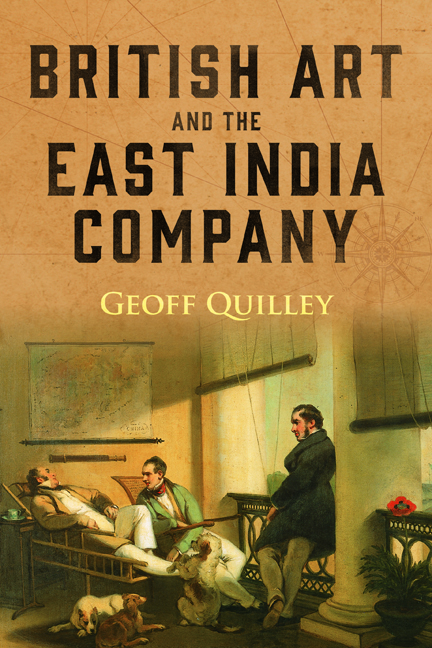Book contents
- Frontmatter
- Contents
- List of Illustrations
- Acknowledgements
- Chapter 1 Introduction: Corporate Patronage and Company Artists
- Chapter 2 ‘That Extensive Commerce’: the Maritime Image of the East India Company
- Chapter 3 Travels in India: Landscape and Colonial Patronage
- Chapter 4 Networks of Knowledge, Power and Cultural Exchange
- Chapter 5 The Cries of India: Colonial Power, Classification, and the Diffusion of Knowledge
- Chapter 6 By Way of China
- Chapter 7 Collecting India
- Chapter 8 Conclusion
- Select Bibliography
- Index
- Worlds of the East India Company
Chapter 5 - The Cries of India: Colonial Power, Classification, and the Diffusion of Knowledge
Published online by Cambridge University Press: 27 March 2021
- Frontmatter
- Contents
- List of Illustrations
- Acknowledgements
- Chapter 1 Introduction: Corporate Patronage and Company Artists
- Chapter 2 ‘That Extensive Commerce’: the Maritime Image of the East India Company
- Chapter 3 Travels in India: Landscape and Colonial Patronage
- Chapter 4 Networks of Knowledge, Power and Cultural Exchange
- Chapter 5 The Cries of India: Colonial Power, Classification, and the Diffusion of Knowledge
- Chapter 6 By Way of China
- Chapter 7 Collecting India
- Chapter 8 Conclusion
- Select Bibliography
- Index
- Worlds of the East India Company
Summary
The inclusion of the three Indian figures at the centre of Hodges's View of the Gate of the Tomb of the Emperor Akbar at Secundrii (Fig. 3.23) points to a further concern among British artists in India in the later eighteenth century, over the representation of the country, not only through reference to its landscape, monuments and history, but also through the definition of its peoples as a series of types, castes, characters and occupations. The three visibly distinct figures in Hodges's print represent recognizable types of Indian tradition, religion and culture, in a form of visual denomination that he took up more openly in Travels in India, with among its illustrations depictions of individuals representative of Indian society, including ‘A Peasant Woman of Hindostan’, ‘A Sepoy Matchlock Man in the Service of the native Princes of Hindostan’ (seen from front and back), ‘A Woman of Hindostan’ and ‘Mullah or Musselman Priest’. Now, these images do not represent any systematic attempt to document a taxonomy of Indian society through ethnography, though as this chapter will demonstrate, there was such a project underway at the same time, to which Hodges's images may be related. Rather, they relate more closely to a picturesque visual tradition focused on native vernacular characters, such as is encapsulated in the ‘Cries’ of London. In Images of the Outcast: The Urban Poor in the Cries of London, Sean Shesgreen identifies the printed images of street-sellers and pedlars sold as the Cries of London, which were so popular in Britain between the seventeenth and nineteenth centuries, as a distinct genre of visual culture. He argues that the Cries, in constantly revisiting stock characters of urban street life as subjects for visual representation, simultaneously romanticized and demonized the lower orders for particular ideological effect, in addressing a set of social types that shared a highly problematic status in being at once visibly prominent in urban culture, but who were also marginalized and frequently criminalized. In ‘aestheticizing people who followed what Edmund Burke disdained as “servile employments”’, he sees the Cries:
Not as passive recipients of ideological bulletins, but rather as active instruments molding values and reinforcing beliefs. As well as documents, they are catechisms that stipulate how hawkers should behave; they are also apologies that justify why the lower orders are lower and must remain so.
- Type
- Chapter
- Information
- British Art and the East India Company , pp. 201 - 242Publisher: Boydell & BrewerPrint publication year: 2020

